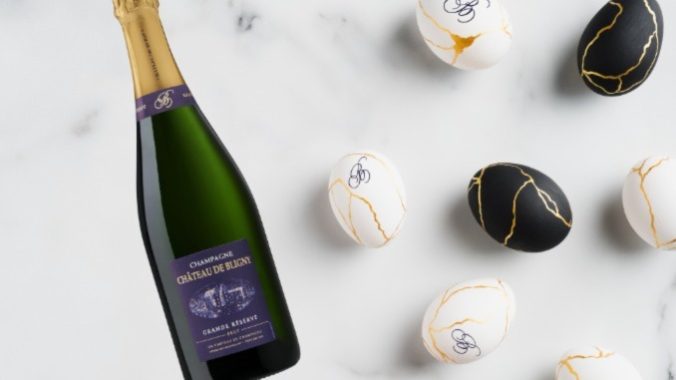Cheers to Champagne That Doesn’t Break the Bank

Champagne has been synonymous with luxury for centuries and secured its spot as the drink of the rich and famous. Coco Chanel once said: “I only drink Champagne on two occasions: when I am in love and when I am not.”
In recent years, the fizzy celebratory ultra-premium drink of the rich has been adopted by regular people on average weekdays. For many during the pandemic, popping a bottle of Champagne became a way to make the Groundhog Day the entire universe was enduring together feel less grim. And once the world opened up again, the thirst for Champagne suddenly became bottomless.
Last year, Champagne shipped almost $1 billion worth of bubbles to the U.S, according to the Champagne Bureau. But how long can the average American—amid inflationary woes and the pesky pressures of paying things like mortgages, car bills and student loans—keep up with the Drakes of the world?
If plonking down well over $5,000+ for a Dom Perignon P3 or $4,600+ for a Louis Roederer Cristal feels financially untenable, fret not. We have found the best bubbles for people with Champagne palates and Two Buck Chuck budgets.
Champagne vs. Other Sparkling Wines
But first, a very brief primer on the differences between Champagne and other sparkling wines.
The first and most obvious difference is that Champagne must be made in Champagne. Generically labeled sparkling wine can be produced anywhere; other specialty sparkling wines that must emerge from a very specific place include Prosecco in Italy’s Veneto and Cava from Spain.
Champagne is also generally made with Pinot Noir, Chardonnay and Pinot Meunier. Pinot Blanc, Pinot Meslier, Arbane and Pinot Gris are also permitted, though they comprise well under 1% of plantings in Champagne. In 2021, Champagne allowed the planting of Voltis, a hybrid grape—but don’t expect it to dominate blends anytime soon, if ever.
The special wine is also made in a very particular way. Produced via Methode Champenoise or Methode Traditionnelle (traditional method), yeasts and (generally) sugar are added to still wine that has already been blended for a secondary fermentation. That second fermentation creates bubbles. Then, the wine is aged for 15 months on the lees (a.k.a. dead yeast cells), for added complexity. The wine is riddled (this removes dead cells), and the Champagne is aged again.
Champagne and other traditional method sparkling wines, when finished, can be fresh and vibrant but have layers of complexity and flavor that other sparkling wines typically do not. Thirsty? Same. Read on.
Best Organically Farmed Premier Cru: Rafflin
Premier is to Cru what Haute is to Couture. It is a special designation given to what officials in Champagne believe is the best, or the Premier, of communes classified in the region. Of the 320 Champagne communes, 44 are designated Premier. There is one higher designation: Grand. Only 17 villages have earned that designation.
When Chrisopher Leon, who owns Leon & Son Wine and Spirits in Brooklyn, is pulling a Champagne for himself, he says he always reaches for Hervé Rafflin’s Champagne Nature’L Extra Brut NV.
“It consistently overperforms for the money, which is about $40 retail,” Leon says. “Especially when you consider that it is made from a Premier Cru site that belongs to his family.”
Indeed, the Rafflin family has lived and worked on its organically farmed estate in Montagne de Reims since 1840.
In the glass: The blend of Pinot Noir, Chardonnay and Pinot Meunier delivers notes of citrus, white flowers, brioche. Bright and lively, the salivating acidity makes it wonderful for pairing with fresh, young cheese or oysters.
-

-

-

-

-

-

-

-

-

-

-

-

-

-

-

-

-

-

-

-

-

-

-

-

-

-

-

-

-

-

-

-

-

-

-

-

-

-

-

-








































